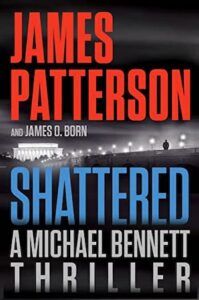Nothing could tear Detective Michael Bennett away from his new bride—except the murder of his best friend. NYPD master homicide investigator Michael Bennett and FBI abduction specialist Emily Parker have a history. When she fails to show at FBI headquarters in Washington, DC, Bennett ventures outside his jurisdiction. The investigation he undertakes is the most brilliant detective work of his career…and the most intensely personal. A portrait begins to emerge of a woman as adept at keeping secrets as forging powerful connections. A woman whose enemies had the means and the motives to silence her —and her protectors. This is a brief and very rushed look at how gothic romance led directly to contemporary romantic suspense. There are many more authors who influenced the reimagining of the gothic genre and innovations within romance. To explore these types of books and get your heart both racing and swooning, take a look at this list of gothic novels for every mood, this list of dark romances, or this list of unputdownable suspense novels. The Castle of Otranto by Henry Walpole is considered to be the first Gothic novel. It helped define the genre with the tropes of haunted castles, secret passageways, and unexpected trap doors. It also has a strong romance plot. The heroine, Isabella, faces extreme threat after threat throughout the novel. She cannot tell who is her enemy and who is a potential love interest. And the hero, Theodore, overcomes many obstacles to save her and prove himself worthy of her love by the end of the story. When the book came out in 1764, readers adored it. It is one of the first English books with supernatural elements. But furthermore it basically invented the gothic genre by combining realism with exaggerated and improbable events. Henry Walpole’s bestseller inspired many other writers to great gothic tales. In the 1790s, Ann Radcliff further popularized gothic romance, through bestsellers like The Romance of the Forest and The Mysteries of Udolpho. Jane Austen gave her take on a gothic romance in Northanger Abbey, which offers a satirical take on the genre while also fanning the flames of the genre’s dominance. And the Bronte sisters, especially with Jane Eyre, made gothic romances more popular than ever before. Edgar Allen Poe created more demand for gothic novels in America (but his stories were not always romances). Towards the end of the century, gothic novels became less popular and started to die out. At the tail end of this trend comes Mary Stewart. In the Venn Diagram of gothic romance and romantic suspense, she is directly in the center spot. In the 1950s, she took many of the conventions of both gothic and contemporary romance to develop the romantic mystery genre. Her first novel, Madam Will You Talk? pioneered her formula of dividing her stories into 50% romance and 50% mystery. Stewart kept certain elements from the gothic novels that inspired her. Her heroines were always in danger. And her heroes were often mysterious and appeared as if they could be threatening. Her earlier novels usually were more gothic in the settings and use of the paranormal and folklore as well. She not only created the recipe for contemporary romantic suspense novels, but she also built a pathway for heroines to have more agency, show intelligence and bravery, and become their own saviors. At the same time, gothic fiction was developing in new and interesting ways. For example, Gaywyck by Vincent Virga was published in 1980 as the first gay gothic romance. The story challenged the stereotypical gender roles and extreme heteronormativity within gothic romance previously. This combination also hooks readers for the same reasons. Readers are swept away worrying about the safety of the characters as well as will-they-won’t-they future of the relationship between the love interests. Heroes in gothic novels are often royalty or brooding wealthy manor owners. By contrast, romantic suspense is now often filled with police officers, FBI agents, and former military veterans. However, in both cases the hero or love interest is often secretive, potentially dangerous, and shaped by some kind of past trauma. And the need for a happily ever after exists throughout both categories of romance as well.
